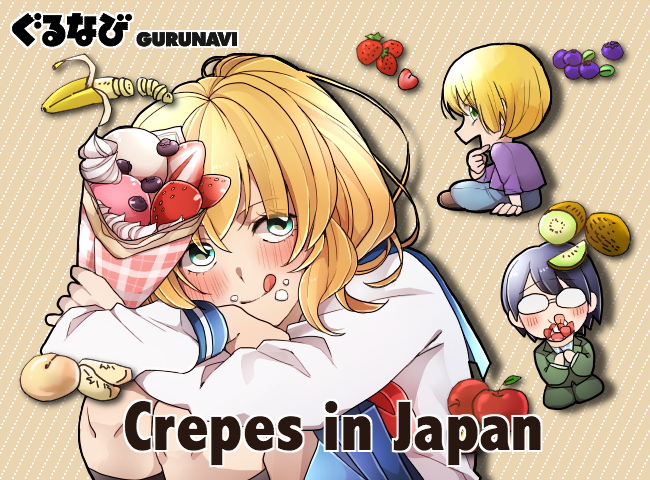Japanese Mochi Guide: Exploring the Tastes, Textures & Tradition
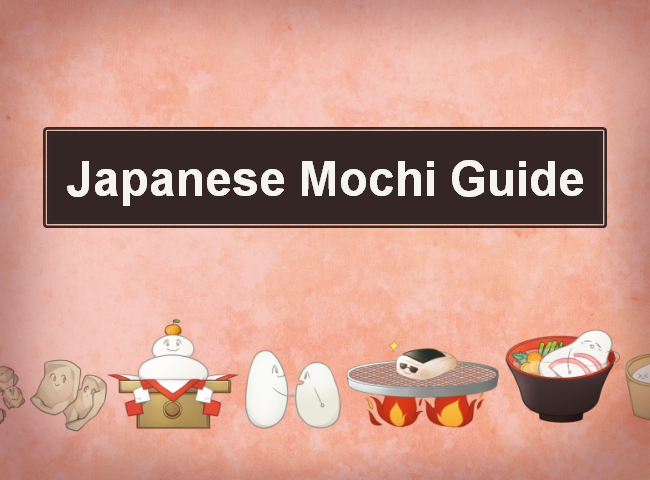
Japanese mochi offers a truly unique experience that combines traditional Japanese flavors with traditional Japanese customs during Japan’s most traditional holiday—New Year’s Day. Read on to learn more about this quintessential winter ingredient and the best ways to eat it while staying in Japan!
Sushi Rice vs. Mochi Rice: Is There a Difference?

You can tell the difference between sushi rice and mochi rice by their looks. Uncooked sushi rice looks more transparent while uncooked mochi rice looks opaque.
Sushi Rice (Uruchigome)
A staple of everyday Japanese meals, sushi rice (uruchigome) has the right amount of stickiness to be enjoyed as a bowl of rice, formed into rice balls (onigiri) or used for sushi (nigirizushi).
Mochi Rice (Mochigome)
Mochi rice (mochigome) is much stickier than sushi rice and is rarely served plain but can be steamed with other ingredients and served as okowa. One of the most famous okowa dishes is called sekihan, which means “red rice.” The mochi rice is steam-cooked with azuki beans, which tints the rice with a slightly pinkish color.
Why Is Mochi Rice Sticky?
What makes mochi rice stickier than sushi rice is an extremely sticky starch called amylopectin. Mochi rice is made up mostly of amylopectin while sushi rice is made up of 80% amylopectin and 20% amylose, a much less sticky starch.
The Tradition behind Japanese Mochi

Mochi rice is most commonly pounded into a rice cake called mochi. While mochi is sold year round at Japanese supermarkets, it’s traditionally eaten during the winter months.
Besides eating mochi during this time, it also plays an important role in Japanese customs as an offering to ancestors and gods that are believed to visit during New Year holidays. This offering, called kagami mochi, is presented as a smaller disk of mochi stacked on top of a larger disk, and completed with a daidai citrus fruit, in hopes of receiving continuous happiness and prosperity in the coming year. The symbolic mochi disks of kagami mochi are said to represent round mirrors used in olden days, which are called kagami.
Once presented to the spirits, the mochi may be eaten following the seventh day after New Year’s Day. During this seven-day period, the ancestors or gods are said to bring new life into the kagami mochi; therefore, eating it is a symbolic act of receiving renewed life at the start of the new year.
For that reason, when preparing to eat kagami mochi, it is advised not to use a knife to cut the mochi since that will be as if cutting up the new life that was given. This is why you might see kagami mochi being broken into pieces with a wooden hammer, which is considered acceptable.
How to Make Mochi
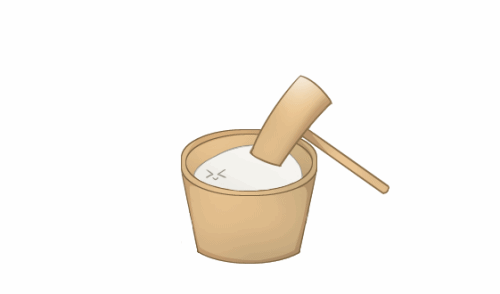
Traditionally, mochi is made using a wooden mortar and mallet. Mochi rice is steam-cooked, then pounded by a heavy wooden mallet in a very large wooden mortar to the point that the rice grains stick together to form one mass of mochi “dough.” It usually takes two people to make mochi in this traditional way—one pounds the rice with a mallet while the other keeps turning the dough by hand, both of which are dipped in water to prevent the mochi from sticking to the mortar and mallet.
Just like there are Japanese rice cookers and bread machines that will do all the hard work for you, there are mochi machines, too! While not an everyday cooking appliance (even in Japan), it’s a great timesaver for mochi lovers.
4 Ways to Enjoy Japanese Mochi
Mochi is such an important part of Japanese winter cuisine that you will often see it being sold at restaurants and supermarkets and by seasonal vendors that show up on street corners, near temples and shrines, and even inside train stations. Here are four quintessential ways to eat Japanese mochi.
Dango Mochi

If you are eating the mochi that has been freshly made with a mortar and mallet, you can tear the mochi into any size you want (though probably no bigger than a piece of nigirizushi) and top the pieces with one of the five popular flavors to make dango mochi:
- Zunda: Mashed edamame soy beans
- Sweetened soy sauce
- Anko: Sweetened azuki bean paste
- Sesame seeds
- Kinako: Roasted and sweetened ground soy bean powder
Other popular dango mochi toppings include walnut or grated daikon radish with soy sauce.
Grilled Mochi
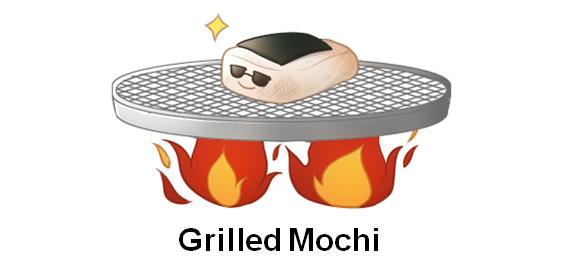
An easy and delicious way of eating mochi is to grill it until it blows up like a balloon and gets a nice crispy brown color. You can dip it in soy sauce and eat it or wrap it with a sheet of seaweed, turning the grilled rice cake into isobe mochi. You usually do this with store bought mochi or fresh mochi that has been stored and dried for a couple of days; not with freshly pounded mochi.
Ozoni
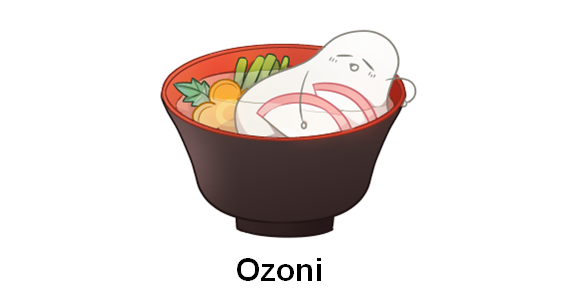
Similar to isobe mochi, there is a popular Japanese winter soup called ozoni that also features grilled mochi, but served in a lightly flavored, clear broth. This is a staple New Year’s dish, and the recipe originated out of the necessity to somehow eat the hardened kagami mochi after being offered to the gods. The soup’s ingredients differ depending on the area of Japan, but all are equally delicious.
At many udon restaurants, you will find a dish called chikara udon (power udon), which includes grilled mochi served with the bowl of hot udon noodles and broth. It is called “power udon” because of its extremely high-starch and high-carb content.
Rice Crackers
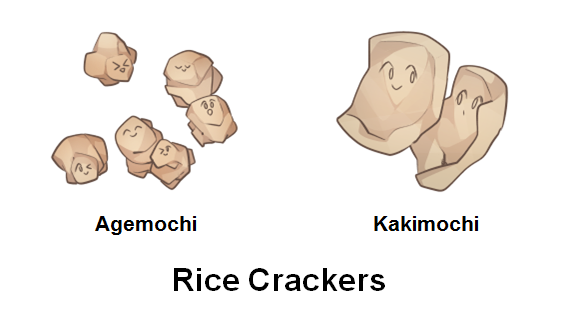
Agemochi is a rice cracker made from either thinly sliced or little pieces of broken dried mochi. The pieces are fried until they puff up like popcorn and then served slightly salted or with soy sauce.
Kakimochi is a rice cracker made from thinly sliced, dried mochi. The slices are grilled and usually served with soy sauce. This rice cracker is no different from those bought at the supermarket, but it tends to have a more “homemade” flavor.
How to Store Mochi
It is best to eat mochi right after being made with the mortar and mallet and you can do this by tearing a piece and eating it with any sweet or savory topping you like. If the fresh mochi is not eaten right away, it is best to shape it into either one giant sheet that is about 1–4 cm (.25–1.5 inches) thick (to be cut later), or shape it into square or round individual serving sizes to be stored.
Mochi can be stored in many different ways. If it is not eaten soon, the best option is to wrap it tightly and place it in the freezer. If the mochi will be eaten within a week or so, it can be stored in a cool, dry place in an airtight container; but keep in mind that mochi will become drier and harder the longer your store it, and harmless mold will eventually develop. (Don’t worry about the mold; you can still eat the mochi by just cutting off the outside layer.)
A Word of Caution for the Young and Elderly
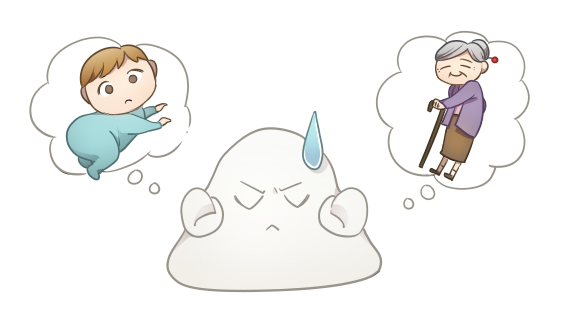
Though mochi is considered an auspicious food for Japanese people, when eating it, special caution must be given for young children and elderly people. Besides being very sticky, mochi is also very stretchy and can be difficult to chew through with your teeth. This makes mochi a dangerous food particularly for children and elderly people due to the potential of causing choking. It is highly advised not to give any mochi to babies or toddlers because their chewing strength is not developed yet.
Taste, Texture and Tradition with Japanese Mochi
Japanese mochi is a delicious way to experience a part of Japanese tradition. If you would like to learn more about the importance of traditional food in Japanese culture, be sure to read our essential guide to Japanese Osechi Ryori.



